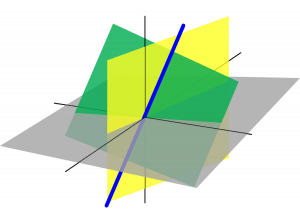First-Ever Picture of a Black Hole Unveiled
A National Geographic article by Nadia Drake
___________________________________________
About two weeks ago, a team of over two hundred scientists released the first ever picture of a black hole. Ironically, the photo captures more of what is known as the event horizon, since the black hole is a generally a void of darkness and is the shadow-like circle in the center of the ring. The event horizon is the threshold surrounding the black hole in which not even light can escape it’s monstrous gravitational pull. See below:
 Picture of the supermassive black hole at the center of Galaxy M87
Picture of the supermassive black hole at the center of Galaxy M87
No matter if the picture is clear or not, it is an impressive feat to say the least. Creating the image took over two years to complete, requiring several teams of scientists to assemble five petabytes of collected data. To put that in perspective, five petabytes is equivalent to the estimated data storage of two human brains — for one image.
The scientists also explain that this picture helps to confirm (for the most part) some of Albert Einstein’s theories, including the famous theory of relativity. In fact, the image, which was collaborated on by observatories around the globe, can tell us a lot about this particular black hole. For instance, based on the data that was collected, it has been estimated that this gargantuan black hole has the mass of around 6.5 billion Suns, and that it’s event horizon could possibly stretch farther than 120 times the distance from the Earth to the Sun.
___________________________________________
The potential impact of this photo and the research that was done cannot be understated. Movies like Interstellar (2014) have long taken guesses at what a black hole would actually look like, and some of those guesses came surprisingly close to the actual image. Personally, I find it incredibly impressive that such predictions can even be made with the minimal knowledge that we currently have about black holes. The photo will likely fuel research on black holes for years to come, particularly when the same team of scientists release the picture of the black hole at the center of our own galaxy, which they were working on in concert to that of M87.
From a more political standpoint, nothing stood out to me more than the fact that this was an international endeavor. Six observatories, including stations in Hawaii, Arizona, Mexico, Chile, Spain, and Antarctica, participated in the data collection process and utilized the skills of scientists from several countries to complete such an ambitious project. It is breakthroughs like these which often exemplify that the best advances in science or technology are created when the world comes together. I couldn’t imagine what the world might accomplish, if all of a sudden, humanity did away with greed and hate; if humanity prevailed with the morals that which make us human, and progress became a global mission, then the stars are the limit. Nothing shows the potential of a world where everyone works together more than these moments.
